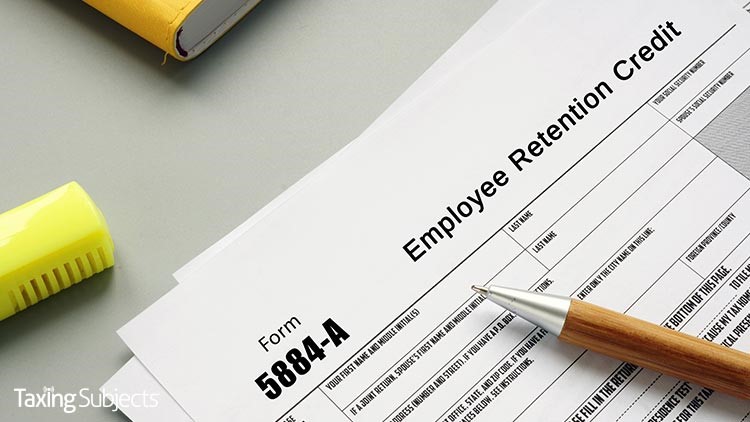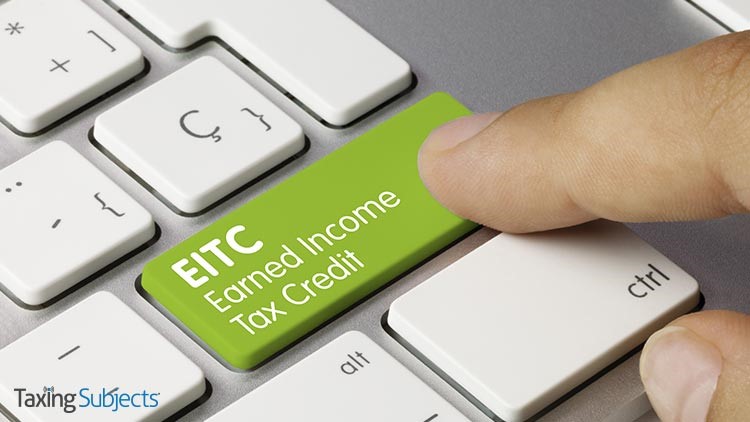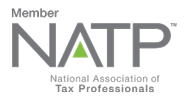by | Apr 22, 2021 | Tax Tips and News
The American Rescue Plan Act of 2021 (ARP) allows small and midsize employers—even certain governmental employers—to claim tax credits that reimburse the cost of providing paid sick and family leave related to COVID-19 to their workers.
The refundable credits can include the leave taken by employees to receive or to recover from COVID-19 vaccinations. The credits are available for such leave from April 1 through September 30.
The IRS has released a fact sheet that gives additional details about the credits and the employers who qualify for them, as well as directions on how to claim the credits.
The Internal Revenue Service says the credits are available to businesses and tax-exempt organizations that have less than 500 employees, giving them a credit for the paid time off they provide each employee getting the COVID-19 vaccine—and for any time they need to recover from the vaccine.
If an eligible employer offers employees a paid day off to get vaccinated, for example, the employer is qualified to get a tax credit that’s equal to the wages paid to the employees for that day. There are limits, of course.
“This new information is a shot in the arm for struggling small employers who are working hard to keep their businesses going while also watching out for the health of their employees,” said IRS Commissioner Chuck Rettig. “Our work on this issue is part of a larger effort by the IRS to assist the nation recover from the pandemic.”
The paid leave credits in the American Rescue Plan specifically target the employer’s share of Medicare tax. Since the credits are refundable, an eligible employer can be refunded the full amount of the credit if it’s more than the amount of their Medicare tax.
The IRS says the credits can be claimed on Form 941, Employer’s Quarterly Federal Tax Return, outlining two situations involving eligible employers:
- In anticipation of claiming the credits on the Form 941, eligible employers can keep the federal employment taxes that they otherwise would have deposited, including federal income tax withheld from employees, the employees’ share of social security and Medicare taxes and the eligible employer’s share of social security and Medicare taxes with respect to all employees up to the amount of credit for which they are eligible. The Form 941 instructions explain how to reflect the reduced liabilities for the quarter related to the deposit schedule.
- If an eligible employer does not have enough federal employment taxes set aside for deposit to cover amounts provided as paid sick and family leave wages (plus the eligible health plan expenses and collectively bargained contributions and the eligible employer’s share of social security and Medicare taxes on the paid leave wages), the eligible employer may request an advance of the credits by filing Form 7200, Advance Payment of Employer Credits Due to COVID-19. The eligible employer will account for the amounts received as an advance when it files its Form 941, Employer’s Quarterly Federal Tax Return, for the relevant quarter.
The IRS closes the release by reminding that a comparable benefit is available to self-employed taxpayers, who would file Form 1040, U.S. Individual Income Tax Return to claim the credits.
Sources: American Rescue Plan tax credits available to small employers to provide paid leave to employees receiving COVID-19 vaccines; Under the American Rescue Plan, employers are entitled to tax credits for providing paid leave to employees who take time off related to COVID-19 vaccinations.
– Story provided by TaxingSubjects.com
by | Apr 20, 2021 | Tax Tips and News
The Internal Revenue Service has issued guidance aimed at employers who claim the employee retention credit (ERC).
The ERC was created by the Coronavirus Aid, Relief, and Economic Security Act (CARES Act), but its terms were changed by subsequent legislation. The changes applying to the first and second quarter of this year are laid out in IRS Notice 2021-23.
The alterations include:
- the increase in the maximum credit amount
- the expansion of the category of employers that may be eligible to claim the credit
- modifications to the gross receipts test
- revisions to the definition of qualified wages
- new limits on the ability of eligible employers to request an advance payment of the credit
The IRS reminds that the ERC is a refundable credit that can be claimed by eligible employers against their share of Social Security tax. That share will equal 70% of the qualified wages the employer paid to employees from Dec. 31, 2020, through June 30, 2021.
Language in the CARES Act—and later modified by the Taxpayer Certainty and Disaster Tax Relief Act of 2020—sets the limit on qualified wages at “$10,000 per worker per calendar quarter in 2021.” That means the employee retention credit is capped at “$7,000 per employee per quarter,” or “$14,000 total for the first two quarters of 2021.”
Claiming the Employee Retention Credit
The IRS says that small employers can still request an advance on the ERC in 2021, though larger employers cannot. Here’s one way that process can work:
“Small employers may request advance payment of the credit on Form 7200, Advance of Employer Credits Due to COVID-19 after reducing deposits,” the IRS explains. “[Though] some limits and eligibility requirements apply.”
Notice 2021-23 has instructions for calculating and claiming the employee retention credit in Q1 and Q2 of this year. However, guidance for the rest of 2021 is still in the works, so stay tuned for new guidance from the IRS and the Department of the Treasury.
Sources: Claiming the employee retention credit in the first and second calendar quarters 2021; Notice 2021-23.
– Story provided by TaxingSubjects.com
by | Apr 19, 2021 | Tax Tips and News
The nation’s Taxpayer Advocate wants taxpayers to know there’s a downside to having too much of a good thing. In this case, it refers to making excessive or improper claims to qualify for a number of tax credits.
The downside is that the IRS has the ability to ban a taxpayer from claiming any of the credits for two years if the credit was improperly claimed through the taxpayer’s “improper or intentional disregard of rules and regulations.”
If the credit was claimed fraudulently, the ban could last up to 10 years.
Taxpayers penalized with such a ban are prohibited from claiming the Earned Income Tax Credit (EITC), the Child Tax Credit (CTC), the American Opportunity Tax Credit (AOTC) and the credit for other dependents (ODC) during the ban period.
The Internal Revenue Manual (IRM) lays out the procedures to impose a ban in IRM 4.19.14.7.1, (12-11-2019). 2/10 Year Ban – Correspondence Guidelines for Examination Technicians (CET).
TAS wants taxpayers to avoid a ban
Rules for claiming the refundable credits are similar—but not the same. The Taxpayer Advocate Service says knowing these rules can keep taxpayers out of trouble:
- Allowable EITC and CTC is a function of a taxpayer’s earned income or “modified adjusted gross income” and the number of “qualifying children” in the household.
- A “qualifying child” is a person who, among other things, meets age requirements, bears a specified relationship to the taxpayer, and has the same principal residence as the taxpayer for more than half the year.
- The EITC and CTC age requirements differ, and disabled dependents (regardless of age) may meet the definition of a qualifying child for the EITC, but not for the CTC.
- The amount of allowable AOTC:
- is a function of “modified adjusted gross income” (like the CTC); and
- is only partially refundable (like the CTC but unlike the EITC).
- The ODC is available for certain “dependents” who are not eligible to be claimed for the CTC.
The Taxpayer Advocacy Service says the residency requirement trips up many taxpayers who incorrectly claim a child who does not actually qualify as their dependent.
Here’s a list of documents the IRS says taxpayers could use to verify residency in an audit: What to Do If the IRS Audits Your Claim.
What can taxpayers do if the IRS seeks a ban?
Taxpayers who are faced with a possible ban on these refundable credits still have rights. Let’s say a taxpayer has one or more of the credits disallowed on a 2020 return, and the IRS wants to impose a ban.
The first time the IRS conducts an audit and seeks a ban, they are required to speak to the taxpayer before moving forward. The IRS also must record the manager’s approval of the ban on its Correspondence Examination Automation Support (CEAS) database.
From there, the TAS says there are four basic options available to taxpayer:
- Agree: A taxpayer may agree to the proposed additional assessment and ban.
- Disagree: If a taxpayer does not agree and does not seek a conference with the IRS Independent Office of Appeals (or does not prevail in an Appeals conference), the IRS will issue a statutory notice of deficiency.
- Tax Court: Upon receipt of a statutory notice of deficiency, a taxpayer may seek review of the IRS’s determination to impose additional tax in the United States Tax Court. However, it’s not clear whether the Tax Court has jurisdiction to consider whether the ban was properly imposed. I recommended that Congress clarify the Tax Court’s jurisdiction in ban cases in the 2020 and 2021 National Taxpayer Advocate Annual Report to Congress Purple Books.
- Audit Reconsideration: Once the ban has been imposed, the IRS sends Notice CP 79A, We Denied One or More of the Credits Claimed on Your Tax Return and Applied a Two-Year Ban, reciting that it denied one or more credits claimed on the return and applied a two-year ban. A taxpayer can then ask the IRS for audit reconsideration of the audit findings. (See IRM 4.13.3.17, Audit Reconsiderations EITC 2/10 Year Ban, for those procedures.) In a typical audit reconsideration, the taxpayer believes that the audit resulted in an inappropriate increase in tax liability and requests the IRS to reevaluate the audit findings. Audit reconsideration is an informal process and a highly effective tool for taxpayers and should be considered as an option to resolve the issue. There is no specific time limit for requesting audit reconsideration, but there are deadlines for requesting refunds.
Bans are sometimes launched from shaky ground
In 2019, the Taxpayer Advocate Service published the Annual Report to Congress Research Study. In it, they examined the cases of 3,831 taxpayers who received credit bans as a result of IRS audits of 2016 tax returns. Here are the TAS’s findings:
- 54 percent of the time, the bans lacked the required managerial approval;
- 84 percent of the time, the attached Form 886-A did not explain why the ban was imposed; and
- 61 percent of the time, the IRS did not speak to taxpayers in the sample being audited for the first time before imposing a ban, as required by the IRM.
Lastly, the NTA recommends a public education campaign to ensure taxpayers—and tax professionals—are aware of the rules associated with the credits and how they are reported.
Sources: Erroneously claiming certain refundable tax credits could lead to being banned from claiming the credits; Study of Two-Year Bans on the Earned Income Tax Credit, Child Tax Credit, and American Opportunity Tax Credit.
– Story provided by TaxingSubjects.com
by | Apr 16, 2021 | Tax Tips and News
The Internal Revenue Service continues to send out Economic Impact Payments (EIPs), aimed at helping Americans though these tough economic times. But how can the agency fulfill its mission if the citizens who need the help most—the homeless and the rural poor—don’t have permanent addresses?
The IRS is relying on a team approach to tackle the problem.
People in these under-served groups may be eligible for an EIP—but they can’t be issued a payment when the IRS doesn’t have their information. So, the agency is asking “community groups, employers, and others to share information about Economic Impact Payments and help more eligible people file a tax return so they can receive everything they’re entitled to.”
IRS Commissioner Chuck Retting says his agency is working “directly with groups inside and outside the tax community to get information directly to people experiencing homelessness and other groups to help them receive Economic Impact Payments.”
People can get Economic Impact Payments even if they have little or no income and even if they don’t usually file a tax return. They do, however, need a Social Security Number and cannot be claimed as a dependent by another taxpayer.
IRS wants to fill in the blanks
The IRS says the only way it can get the information it needs to send out an EIP is from a basic 2020 federal tax return. When a return is processed, the IRS can then send stimulus payments to the address of choice selected by the filer.
“Someone experiencing homelessness may list the address of a friend, relative or trusted service provider, such as a shelter, drop-in day center or transitional housing program, on the return filed with the IRS,” the agency explains. “If they are unable to choose direct deposit, a check or debit card for the tax refund and the third Economic Impact Payment can then be mailed to this address.”
In addition to EIP3, the IRS says those without a permanent address can qualify for other tax credits—like the Earned Income Tax Credit—and even EIP1 and EIP2 when filing a 2020 return.
To get their share of those two earlier direct payments, the filer needs to claim the Recovery Rebate Credit. For those who are unfamiliar with the RRC, the IRS has a webpage dedicated to it: Claiming the 2020 Recovery Rebate Credit if you aren’t required to file a tax return.
As for the EITC, the IRS says their EITC Assistant can help homeless workers determine whether they qualify and estimate its value.
Getting a bank account isn’t required
While a bank account isn’t required to receive an Economic Impact Payment, having an account does enable a filer to get their EIP direct deposited.
The Federal Deposit Insurance Corporation (FDIC) website has details on opening an account online. Other resources with lists of banks and credit unions that can open an account online include:
The IRS also notes that veterans can use the Veterans Benefits Banking Program (VBBP) “for access to financial services at participating banks.”
Filers with a prepaid debit card may also be able to have their refund sent to their card account. Cardholders need to check with the institution that issued the card to find out if the card can be used and to get the routing and account numbers, which could be different from the card number.
Other resources for employers
The IRS issued this latest press release to “help spread the word” to those who could use this financial boost the most. To make it easier for employers to provide employees with information about the Earned Income Tax Credit, they created an outreach material packet that is available on their site: EITC.IRS.gov/Partner-Toolkit/Employers/Employers.
Sources: Those experiencing homelessness can get Economic Impact Payments and other tax benefits; Claiming the Recovery Rebate Credit if you aren’t required to file a tax return
– Story provided by TaxingSubjects.com
by | Apr 14, 2021 | Tax Tips and News
The Internal Revenue Service is once again warning taxpayers who are involved in abusive micro-captive insurance schemes that they need to get out of those arrangements—and quickly.
A new U.S. Tax Court victory has added steam to the latest round of IRS examinations of these arrangements, finding they “are not eligible for the tax benefits claimed.”
IRS wins its day in court
In March, the IRS won its case before the U.S. Tax Court in Caylor Land & Dev. v. Commissioner, T.C. Memo. 2021-30. The IRS says the case confirmed its other findings that insurance under these micro-captive arrangements doesn’t qualify as insurance for federal tax purposes. This latest case also bolstered how the IRS determines penalties related to accuracy of the scheme’s claims while rejecting the taxpayer’s claim to have relied on tax advice.
IRS Commissioner Chuck Rettig says the new court victory is just more evidence that micro-captive insurance schemes won’t survive the harsh examination of the law. As a result, the IRS advises taxpayers who have been involved in micro-captive insurance arrangements to get out of their arrangement and not report deductions associated with the scheme.
IRS widens its investigations
The IRS isn’t just beefing up its court strategy on this issue; it’s also increasing its investigative forces.
In 2020, the Internal Revenue Service deployed 12 new micro-captive audit teams to ramp up scrutiny of ongoing transactions by micro-captive insurance arrangements. An IRS press release lays out the agency’s game plan for micro-captive insurance schemes.
“The IRS will disallow tax benefits from transactions that are determined to be abusive and may also require domestic captives to include premium payments in income and assert a withholding liability on foreign captives,” the release states. “The IRS will continue to assert penalties, as appropriate, including the strict liability penalty that applies to transactions that lack economic substance.”
Taxpayers on notice for bigger penalties
Back in 2016, the IRS raised the red flag that micro-captive insurance transactions are on the agency’s radar for tax avoidance or tax evasion. Notice 2016-66 lays out a checklist of sorts to alert tax professionals what aspects of these tax structures could lead auditors to determine them to be abusive. These shady tax moves are called “transactions of interest.”
The IRS says it sent letters in 2020 to taxpayers who took part in one of those transactions listed in the Notice. The letters let the taxpayers know that IRS audit activity was about to expand dramatically and gave them the chance to tell the agency if they had gotten out of the arrangement before the audit actually began.
The early responses, the IRS proudly notes, indicate that a lot of the forewarned taxpayers have indeed exited their arrangements.
Sources: IRS urges participants of abusive micro-captive insurance arrangements to exit from arrangements; 12 new audit teams established; Notice 2016–66 Transaction of Interest — Section 831(b) Micro-Captive Transactions
– Story provided by TaxingSubjects.com










